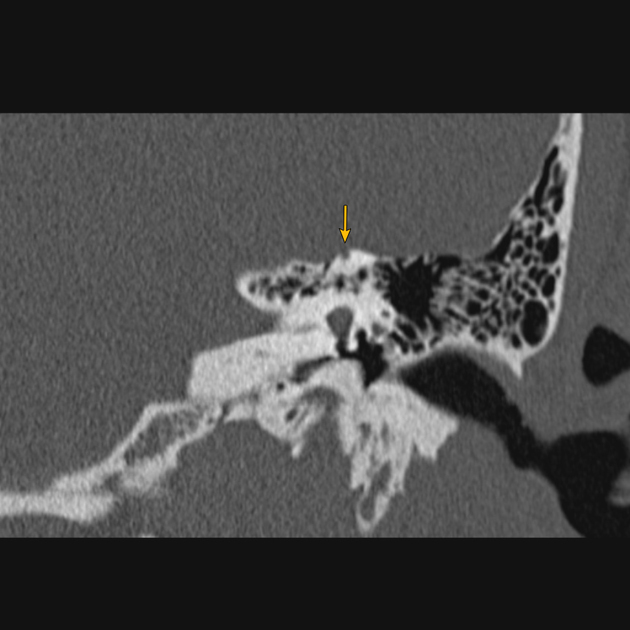Dehiscence of the semicircular canals has been described for all three of the canals, namely superior (most common), posterior, and lateral. The presence of dehiscence does not mean that an individual will experience any symptoms. Indeed in a large study, 10% of the CT scans of the temporal bone showed dehiscence of the superior semicircular canal in patients who lacked the typical symptoms of the associated syndrome 1.
On this page:
Images:
Pathology
Dehiscence of the semicircular canal forms a "third window" into the inner ear, in addition to the round and oval windows. This allows movement of the endolymph to be induced by sound/pressure stimuli and may result in vestibular symptoms. Moreover, this allows sound energy to be dissipated out of the membranous labyrinth other than conducting straight from the oval window to round window, resulting in hearing loss.
In some patients dehiscence of both the superior and posterior semicircular canals has been found, raising the possibility that the pathogenesis relates to abnormal bony development. Alternatively/additionally it may be due to the proximity of these two canals to the jugular bulb (the lateral canal is not adjacent to it).
Treatment and prognosis
Surgical closure of the dehiscence has been successful in some cases 1.





 Unable to process the form. Check for errors and try again.
Unable to process the form. Check for errors and try again.